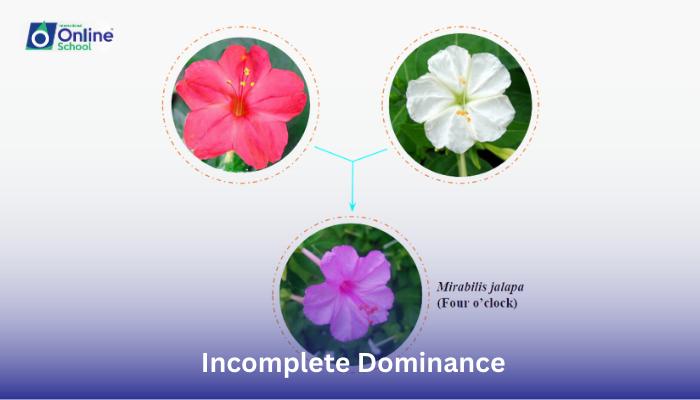
Learning Outcomes:
i. Define incomplete dominance and its significance in understanding non-Mendelian inheritance.
ii. Explain the concept of blended phenotypes and their relationship to incomplete dominance.
iii. Analyze the inheritance of flower color in the 4 O'clock plant as an example of incomplete dominance.
iv. Appreciate the diversity of genetic expression and the limitations of simple dominant-recessive models.
Introduction:
Imagine a world where everything was either black or white, where every trait had a clear-cut dominant and recessive expression. But life, like a vibrant sunset, is rarely so simple. In the fascinating realm of genetics, there are shades of gray, where genes don't always play by the rules of simple dominance. In this lesson, we'll step into this intricate world and explore a phenomenon called incomplete dominance, using the 4 O'clock plant as our colorful canvas.
i. The Dance Gets Blurry: Unveiling Incomplete Dominance
Mendel's laws taught us that dominant alleles usually mask their recessive counterparts, creating distinct phenotypes. But sometimes, the genetic tango takes an unexpected turn. In incomplete dominance, neither allele is dominant enough to completely suppress the other. Instead, they blend together, creating a blended phenotype, somewhere in between the two parental expressions. Imagine mixing red and white paint – you wouldn't get pure red or pure white, but a beautiful shade of pink. This is the essence of incomplete dominance.
ii. The 4 O'clock Plant: A Canvas of Colors
The 4 O'clock plant, with its vibrant blooms, is a perfect example of incomplete dominance in action. The plant can have red or white flowers, but when parents with these contrasting colors mate, their offspring don't simply inherit either red or white. Instead, they develop a pink flower color, a unique blend of the parental alleles. This phenomenon showcases how incomplete dominance creates a wider range of phenotypes, defying the simple dominant-recessive model.
iii. Beyond Black and White: The Beauty of Diversity
Incomplete dominance is not just about pretty pink flowers; it has profound implications for understanding the complexity of genetic expression. It reveals that inheritance is not always a clear-cut battle between dominance and recessiveness. Instead, it's a nuanced interplay of genes, where different alleles can collaborate, compromise, or even compete, leading to a diverse spectrum of possible phenotypes. This diversity is essential for adaptation, evolution, and the continued survival of species in a changing environment.
Incomplete dominance reminds us that genetics is not a simple rulebook but a dynamic dance of genes. By exploring this concept, we gain a deeper appreciation for the intricate ways in which our traits are shaped, the limitations of simple models, and the incredible diversity of life that arises from the complex interplay of genes within our DNA. So, the next time you see a flower with a unique shade, remember, it might be a testament to the beauty and complexity of incomplete dominance, a reminder that life is often painted in shades of gray, where the true magic lies in the unexpected blends and the endless possibilities that arise from the intricate dance of genes.